#Alabama Wildlife Federation
Explore tagged Tumblr posts
Text
Community Service Blog
Overview
In this post I will be recapping my community service experience this semester, review the article I have read relating to the organization I worked with and reflect on both.
What did I do?
For my community service I decided to create a volunteer flyer for the Alabama Wildlife Federation (AWF). AWF is one of the oldest and largest and oldest wildlife conservation organizations in the state. Since 1935 it has worked with citizens, other organizations and the local governments to encourage communities to protect and preserve the ecosystems within their communities. With the generosity of donors and dedication of volunteers the organization has been able to flourish and fulfill its goals.
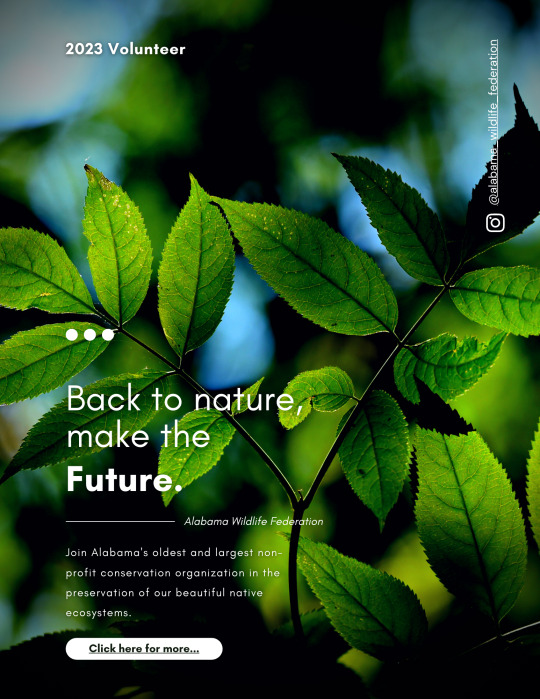
For my flyer, I went to Canva for an eco-themed template and added some of the basic information I had learned about the organization. I inserted hyperlinks to the organizations Instagram and website so that those interested would be able to seek out information directly form the source.
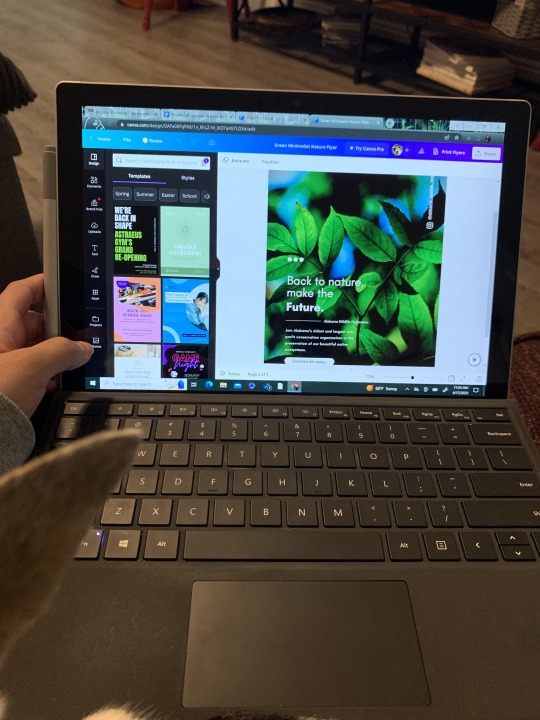

Article review
Authors: Adam S. Willcox and William M. Giuliano
Publisher: Wildlife Society Bulletin
Link: https://www.jstor.org/stable/wildsocibull2011.35.2.59?sid=primo
MLA Citation: Adam S. Willcox, and William M. Giuliano. “Cattle Rancher and Conservation Agency Personnel Perceptions of Wildlife Management and Assistance Programs in Alabama, Florida, Georgia, and Mississippi.” Wildlife Society Bulletin (2011), vol. 35, no. 2, 2011, pp. 59–68.
Summary: In their article Cattle Rancher and Conservation Agency Personal Perceptions of Wildlife Management and Assistance Programs in ALabama, FLorida, Georgia, and Mississippi, Adam S. Willcox and William M. Giuliano surveyed cattle ranchers in several states in order to understand their perceptions of conservation organizations and policies. In their article they found that the majority of cattle ranchers considered themselves stewards of the land and desired to protect the wildlife that lived within their property. However, they became frustrated with wildlife organizations that interfered with their ability to make profit off their lands through restrictions and protection of predatory animals. Willcox and Giuliano emphasize the importance of conservationists listening to the communities they involve themselves with in order to create a sustainable and positive impact.
Analysis: Adam S. Willcox is a research assistant professor at The University of Tennessee and William M. Giuliano is an Associate professor at the College of Agricultural and Life Sciences. Both have authored and co authored several research papers regarding conservationist concerns and agriculture. In their article, the authors use terms such as “suggest” (59) which gives the article a tone of humility. They are not attacking their audience or demanding cooperation. Instead, the authors are sharing their observations and suggesting a solution which the audience can use or ignore. Willcox and Giuliano's argument makes sense. Conservation organizations cannot expect to work with cattle ranchers if they will ignore their concerns. It is important for both sides to respect each other's views and find a middle ground to cooperate on. The target audience is conservation agencies looking to work with cattle ranchers in southern agricultural states. The article struck me as one for the lay reader. The authors wording makes it easy to understand their research study and their explanation of the data makes their conclusion clear. It was not full of difficult-to-understand jargon or descriptions. The article was fascinating to read and made me consider conservationist approaches to communities. In one of the recent discussions (29) for my environmental writing course, we discussed Marine Protected areas or MPAs. Although they allow endangered species and coral ecosystems to flourish they can harm the local fishing communities. By placing legal prohibitions on the areas the fishermen fish, conservationists cut off the main source of income for the communities resulting in the local economy crashing. Willcox and Giuliano's suggestion for conservations to work and communicate with the local communities of the ecosystems they are trying to protect will prevent issues like the one previously mentioned from occurring.
Additional Info
youtube
Sources
Adam S. Willcox, and William M. Giuliano. “Cattle Rancher and Conservation Agency Personnel Perceptions of Wildlife Management and Assistance Programs in Alabama, Florida, Georgia, and Mississippi.” Wildlife Society Bulletin (2011), vol. 35, no. 2, 2011, pp. 59–68. “Adam Willcox.” Conservation Science Group, https://consci.utk.edu/people/adam-willcox/.
“Alabama Wildlife Federation.” Alabama Wildlife Federation | AWF, https://www.alabamawildlife.org/. Giuliano, William M. Associate Professor - Vivo.ufl.edu. https://vivo.ufl.edu/display/n55961.
2 notes
·
View notes
Text
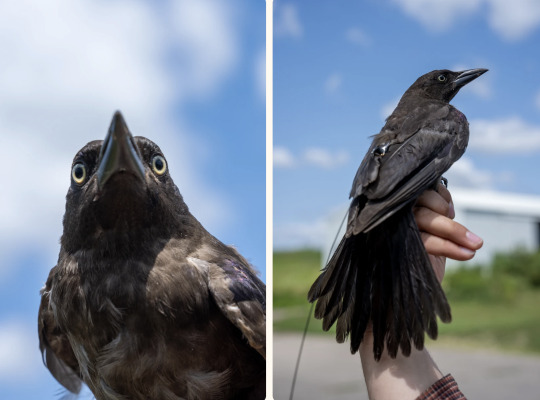
I'm going to invite these scientists to our house and yard. We have dozens and dozens of grackles at our feeders, making their grackle noises and bullying away our other "resident" birds. But in case they're right, here's an excerpt from an Audubon story:
As people have remade the American landscape, they’ve also shaped the fortunes of Common Grackles. The iridescent blackbirds flourished in the grain fields and pastures that European settlers cultivated after cutting down forests in the 18th and 19th centuries. By the 1970s, an estimated 150 million grackles inhabited a vast stretch from the East Coast to the Rocky Mountains, and today they are regulars across much of the continent. But the birds are disappearing—and no one knows why. A new tracking project aims to reveal what’s driving the mysterious decline.
Birders were among the first to gather evidence of the species’ troubling trajectory. In winter, grackles join Red-winged Blackbirds, European Starlings, and other birds in giant swirling congregations. Audubon’s annual Christmas Bird Count (CBC) long tallied roosts of up to tens of millions of birds. But in the past couple of decades, participants have rarely found flocks of more than a few million, says former CBC director Geoff LeBaron. Other blackbirds are in decline, too, but grackles have become noticeably absent from winter roosts.
According to CBC data, Common Grackles have been dropping at a rate of 3 percent per year, which amounts to a roughly 78 percent decline since 1970, says Tim Meehan, a quantitative scientist at Audubon. Meanwhile, federal Breeding Bird Surveys, which take place each summer, have found at least a 50 percent decline over the past half century. These data clearly indicate that there are fewer grackles across the board, Meehan says: “It’s a slam dunk.”
Michael Ward, a University of Illinois biologist, is one of the lead scientists delving into the conundrum. In 2021 he and his colleagues ruled out a hunch that grackles were failing to produce young: 60 percent of chicks in nearly 200 nests that he monitored fledged successfully, a higher rate than most songbirds achieve. Whatever is harming grackles is likely affecting adults, Ward says.
It’s possible the resourceful foragers, which eat everything from grubs to grains to garbage, are exposed to something dangerous in their diet. The researchers suspect insects and corn could be hazardous meals: Both may contain high levels of neonicotinoids—insecticides commonly applied to grains that have been linked to a decline in avian biodiversity in North America and beyond. Ward’s group plans to study what grackles eat on their breeding grounds to help determine how great a risk their food poses.
Meanwhile, the scientists want to better understand the challenges grackles face after leaving their breeding grounds. In addition to stringing up mist nets to snag birds in residential neighborhoods and at roost sites, Ward and U.S. Fish and Wildlife Service biologist Kelly VanBeek set live traps baited with seed and mealworms at Southern Wisconsin Bird Alliance’s Goose Pond Sanctuary. They outfitted 14 Common Grackles with satellite tags throughout the summer and early fall of 2023 as the birds prepared to depart for their wintering grounds in the Southeast and southern Midwest.
On those journeys, VanBeek says, there are plenty of opportunities for the migrants to encounter other possible chemical culprits like fungicides, which may disrupt birds’ hormones and metabolism and are typically applied in the fall when grackles are on the move. Blackbirds’ penchant for foraging on farmland in large flocks makes them a target for culling as well. Between 1974 and 1992, the federal government killed up to 18 million Common Grackles in Kentucky, Tennessee, and Alabama to reduce damage to agricultural crops. The pace has slowed, but the practice continues: Wildlife Services, a USDA division, killed more than 630,000 Common Grackles over the past decade. That’s on top of birds taken by farmers under FWS permits.
221 notes
·
View notes
Text

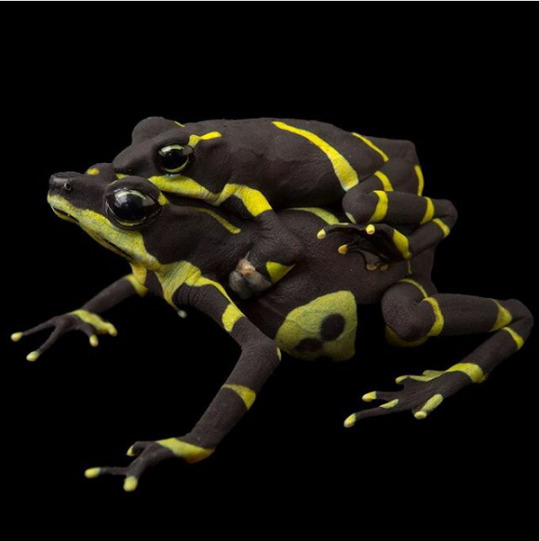

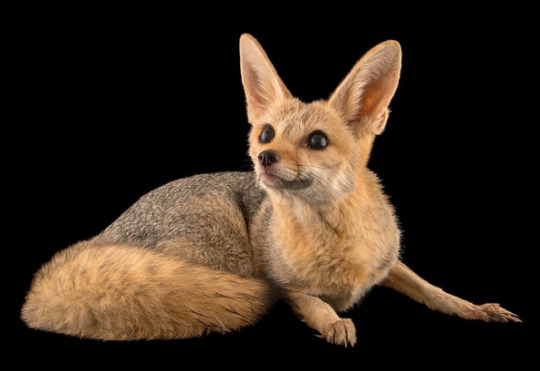

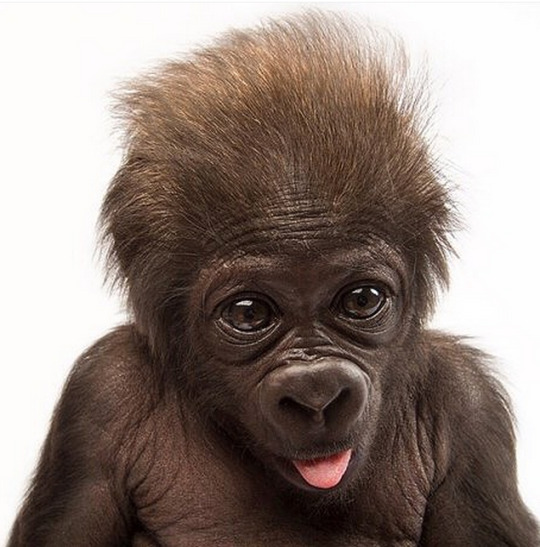


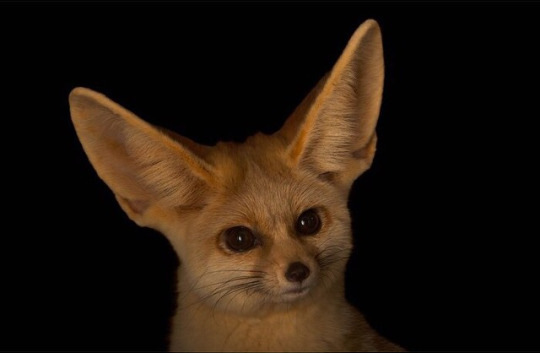
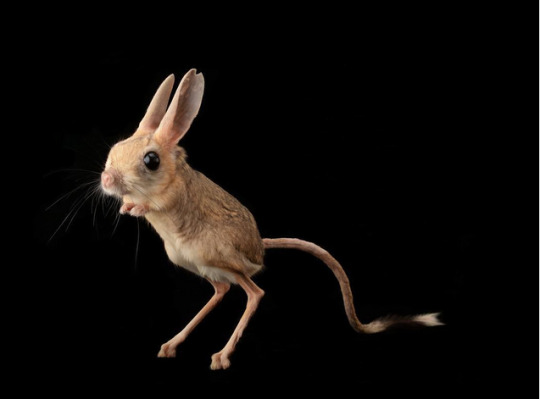
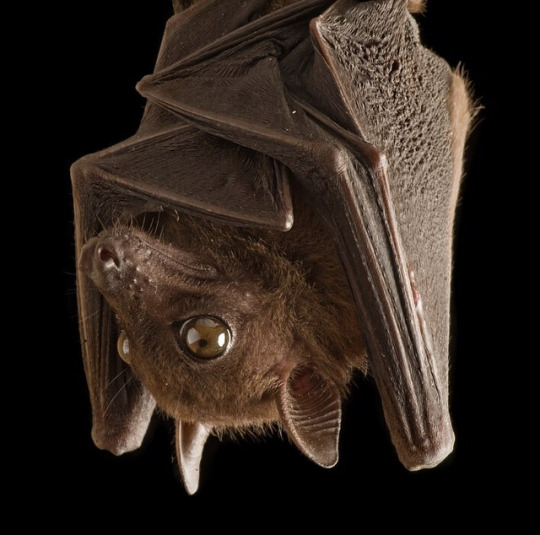

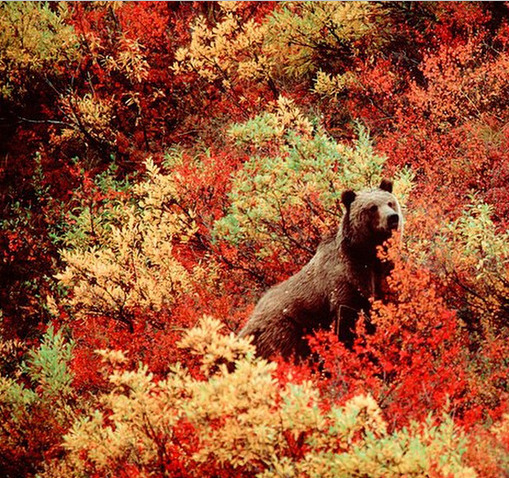
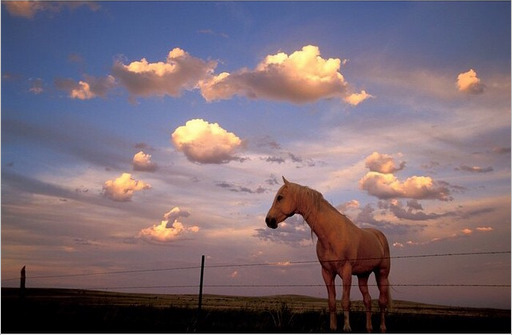
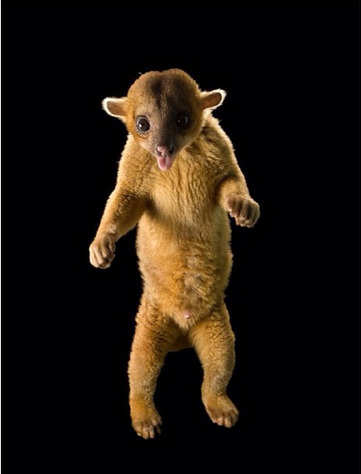
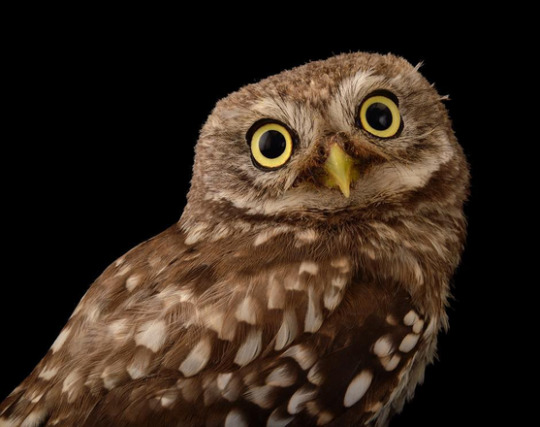

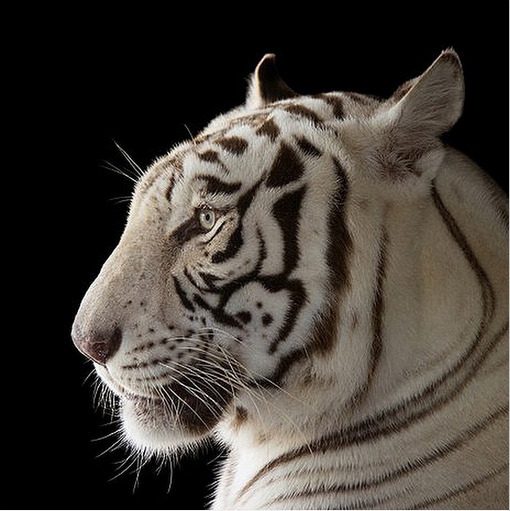
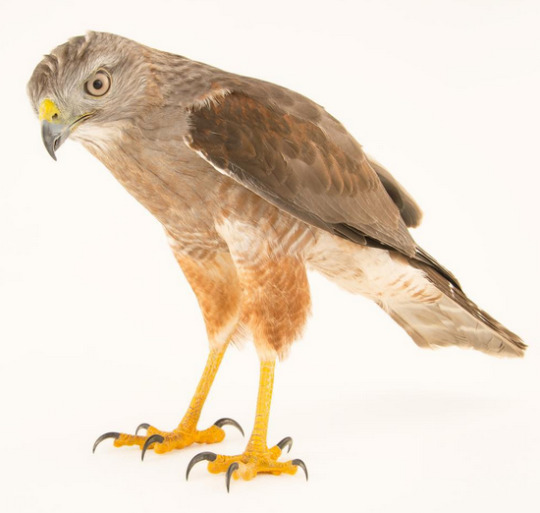

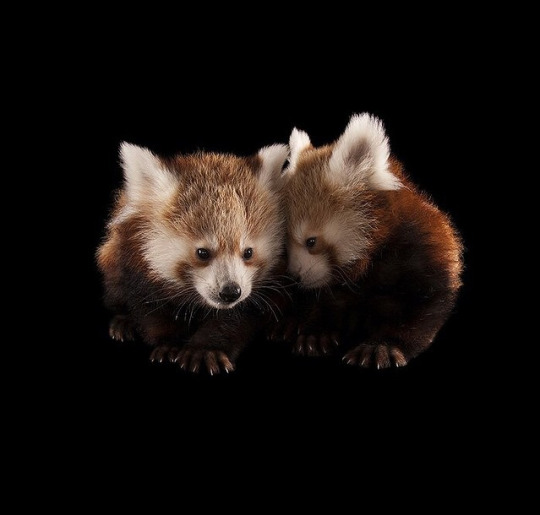
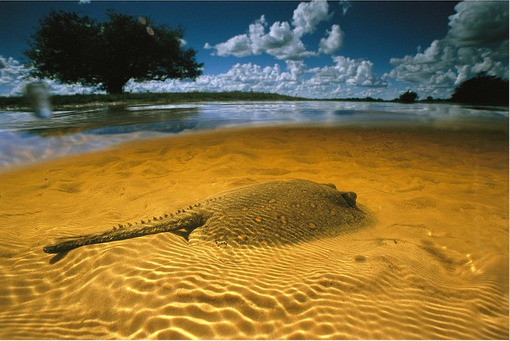
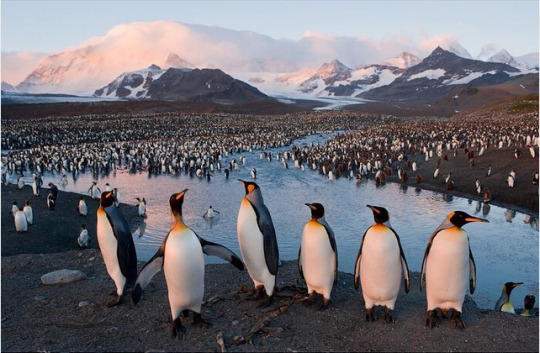
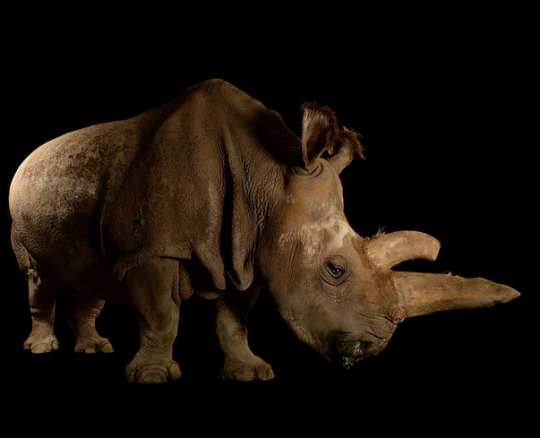

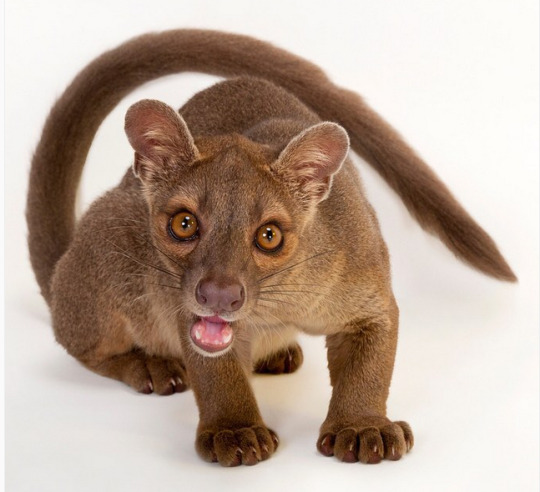
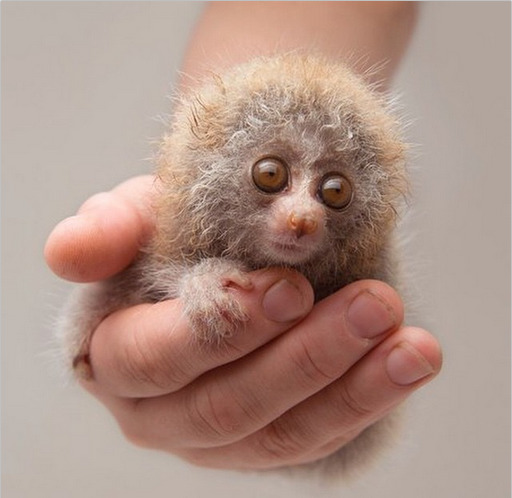
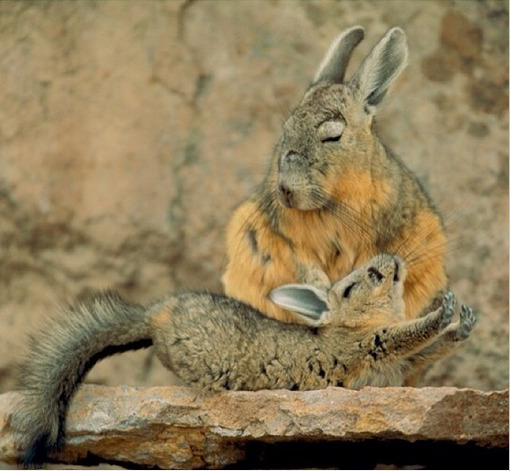


Photos and texts: @joelsartore
1-. A bobtail squid at the Monterey Bay Aquarium
2-. A breeding pair of endangered Limosa harlequin frogs at the Panama Amphibian Rescue and Conservation Project
3-. A brown-throated sloth at the PanAmerican Conservation Association in Gamboa, Panama
4-. A Cape fox at the Plzen Zoo in the Czech Republic
5-. A critically endangered Ridgeway's hawk from my trip to the Dominican Republic
6-. A critically endangered, six-week-old female baby gorilla at the Cincinnati Zoo
7-. A endangered Matschie's tree kangaroo at the Lincoln Children's Zoo
8-. A federally endangered yellow-footed rock wallaby at Omaha Zoo's Wildlife Safari Park
9-. A fennec fox named Sophie at Chattanooga Zoo
10-. A four-toed jerboa at the Plzen Zoo in the Czech Republic
11-. A fruit bat from Bioko Island, Equatorial Guinea
12-. A Gambian epauletted fruit bat at the Plzen Zoo in the Czech Republic
13-. A grizzly bear in fall color at Denali National Park, in Alaska's interior
14-. A horse at the Sandal Ranch near Howes, South Dakota
15-. a kinkajou at the New York State Zoo. This animal is naive to Central and South America
16-. A little owl from the Budapest Zoo
17-. Polar bears at the Columbus Zoo
18-. Rajah, an endangered male, white Bengal tiger at Alabama Gulf Coast Zoo
19-. Ridgeway's hawk
20-. The view of the Palouse hills as seen from Steptoe Butte in eastern Washington
21-. Twin three month old red pandas at the Lincoln Children's Zoo
22-. a freshwater stingray lies partially hidden in the sand of a flooded country road in Brazil's Pantanal
23-. A king penguin rookery from South Georgia Island's St. Andrews Bay
24-. Nabire, one of just five northern white rhinos left on the planet. RIP
25-. jaguarundi
26-. A 1-year-old fossa as the Omaha Zoo. This is Madagascar's largest mammalian predator, and its numbers are declining in the wild
27-. a 24 day-old bengal slow loris at the Endagered Primate Rescue Center in Vietnam. Is named Captain Hook, because he is missing a hand
28-. baby viscacha stretches out after a nap with mom in Chile's Atacama Desert
29-. A black swallowtail butterfly, wich is native to Nebraska, at the Lincoln Children's Zoo
3 notes
·
View notes
Text
Rename Gulf of Mexico? How asinine can it get?
I don't much care for politics and politicians, do not have the health and energy to keep track of politics, even though I am well aware that politics directly impacts my life at national, state, county, city, levels. What is this about? Why is this even a thing?
Sec. 4. Gulf of America. (a) The area formerly known as the Gulf of Mexico has long been an integral asset to our once burgeoning Nation and has remained an indelible part of America. The Gulf was a crucial artery for America’s early trade and global commerce. It is the largest gulf in the world, and the United States coastline along this remarkable body of water spans over 1,700 miles and contains nearly 160 million acres. Its natural resources and wildlife remain central to America’s economy today. The bountiful geology of this basin has made it one of the most prodigious oil and gas regions in the world, providing roughly 14% of our Nation’s crude-oil production and an abundance of natural gas, and consistently driving new and innovative technologies that have allowed us to tap into some of the deepest and richest oil reservoirs in the world. The Gulf is also home to vibrant American fisheries teeming with snapper, shrimp, grouper, stone crab, and other species, and it is recognized as one of the most productive fisheries in the world, with the second largest volume of commercial fishing landings by region in the Nation, contributing millions of dollars to local American economies. The Gulf is also a favorite destination for American tourism and recreation activities. Further, the Gulf is a vital region for the multi-billion-dollar U.S. maritime industry, providing some of the largest and most impressive ports in the world. The Gulf will continue to play a pivotal role in shaping America’s future and the global economy, and in recognition of this flourishing economic resource and its critical importance to our Nation’s economy and its people, I am directing that it officially be renamed the Gulf of America. (b) As such, within 30 days of the date of this order, the Secretary of the Interior shall, consistent with 43 U.S.C. 364 through 364f, take all appropriate actions to rename as the “Gulf of America” the U.S. Continental Shelf area bounded on the northeast, north, and northwest by the States of Texas, Louisiana, Mississippi, Alabama and Florida and extending to the seaward boundary with Mexico and Cuba in the area formerly named as the Gulf of Mexico. The Secretary shall subsequently update the GNIS to reflect the renaming of the Gulf and remove all references to the Gulf of Mexico from the GNIS, consistent with applicable law. The Board shall provide guidance to ensure all federal references to the Gulf of America, including on agency maps, contracts, and other documents and communications shall reflect its renaming.
0 notes
Text
Discover Your Dream Home: Explore Homes for Sale in Millbrook, AL
Homes For Sale In Millbrook AL, a city of charm and convenience, is the perfect place to call home. Nestled just outside Montgomery, Millbrook offers a harmonious blend of suburban living and small-town warmth, making it an ideal destination for families, professionals, and retirees alike. If you’re searching for your dream home, look no further than the variety of homes for sale in this welcoming community.

A Thriving Community
Millbrook is a city that balances growth with its strong sense of community. Residents enjoy a friendly atmosphere, where neighbors know each other, and local events bring people together. From farmers' markets to holiday parades, Millbrook is a place where community spirit thrives.
With a population of approximately 17,000, Millbrook offers the conveniences of a larger city while maintaining the charm of a close-knit town. It’s a city where families grow, friendships flourish, and memories are made.
A Range of Housing Options
The homes for sale in Millbrook cater to a variety of needs and budgets. Whether you’re a first-time buyer, looking to upgrade, or seeking a cosy retreat for your retirement years, there’s a property for you.
Charming Starter Homes
For first-time buyers, Millbrook offers a selection of affordable yet stylish homes. These properties often feature modern layouts, spacious yards, and proximity to schools and amenities, providing an excellent entry point into homeownership.
Family-Friendly Residences
For growing families, Millbrook boasts beautiful single-family homes with plenty of space. Many of these homes include multiple bedrooms, expansive kitchens, and large backyards perfect for family gatherings. Neighborhoods often feature sidewalks, parks, and easy access to schools, creating a safe and convenient environment for children.
Luxury Living
For those seeking upscale options, Millbrook offers luxurious homes with high-end finishes, custom designs, and premium features. From gourmet kitchens to serene outdoor spaces, these properties are built for comfort and style. Many are located in exclusive neighbourhoods, offering privacy and prestige.
Rural Retreats
If you dream of a more secluded lifestyle, Millbrook’s countryside offers spacious properties with scenic views. These homes provide the peace of rural living while still being close to city conveniences.
A Prime Location
One of Millbrook’s biggest draws is its location. Just a short drive from Montgomery, residents have easy access to the amenities of a larger city, including shopping centres, fine dining, and entertainment options. The city is also conveniently located near major highways, making it an excellent choice for commuters.
For nature enthusiasts, Millbrook is a gateway to outdoor adventure. The city is close to several parks, trails, and waterways. Coosa River and Alabama Wildlife Federation's NaturePlex offer opportunities for fishing, hiking, and wildlife observation, making Millbrook a haven for outdoor lovers.
Top-Notch Schools
Families with children will appreciate Millbrook’s excellent schools. The city is served by the Elmore County School System, known for its commitment to academic excellence and student success. Additionally, there are private and speciality school options nearby, catering to diverse educational needs.
Affordable Living
Millbrook Aronov Realty is not only a beautiful place to live but also an affordable one. The cost of living is lower than the national average, allowing homeowners to enjoy a high quality of life without breaking the bank. From property taxes to everyday expenses, Millbrook is a cost-effective choice for families and individuals alike.

A Welcoming Atmosphere
What sets Millbrook apart is its warm and welcoming atmosphere. The city’s residents take pride in their community, and newcomers are always greeted with open arms. Whether attending a local event, joining a community group, or simply exploring the town, you’ll find Millbrook feels like home from the moment you arrive.
Why Choose Millbrook for Your Dream Home?
Diverse Housing Options: Whether you’re looking for a cosy starter home, a spacious family residence, or a luxurious retreat, Millbrook has it all.
Convenient Location: Close to Montgomery and major highways, Millbrook offers both convenience and connectivity.
Affordable Living: With a low cost of living and attractive home prices, your dream home is within reach.
Quality Education: Excellent schools make Millbrook a great choice for families.
Natural Beauty: From parks to waterways, Millbrook is surrounded by stunning scenery.
Community Spirit: A friendly and welcoming atmosphere makes Millbrook a place where everyone feels at home.
Take the Next Step
Finding your dream home in Millbrook, AL, is an exciting journey, and with so many options, there’s never been a better time to start. Work with a trusted local real estate agent who knows the area and can guide you through the process.
From touring beautiful properties to finding the perfect neighbourhood, you’ll receive the support you need to make your dream a reality. Whether you’re drawn to the city’s charm, its affordability, or its sense of community, Millbrook has everything you need to create a life you’ll love.
Conclusion
Millbrook, AL, is more than just a city; it’s a place to call home. With its blend of affordability, convenience, and community, it’s no wonder so many people are choosing to settle here. Discover the homes for sale in Millbrook today, and take the first step toward living the life you’ve always dreamed of. Whether you’re starting a family, looking for a fresh start, or ready to enjoy your golden years, Millbrook is waiting to welcome you home. Explore your options, find your perfect fit, and get ready to embrace everything this wonderful city has to offer.
0 notes
Text
Holidays 9.9
Holidays
Administrators’ Day (Brazil)
Alita Day
Amalthea Discovery Day (5th Moon of Jupiter)
Anti-Jim Jefferies Day (Reno, Nevada)
Armed Forces Day (Ukraine)
Blessed Father Jaques Level Day (Mauritius)
Bonza Bottler Day
Care Bears Share Your Care Day
Carl Garner Federal Lands Cleanup Day
Children’s Day (Costa Rica)
Chrysanthemum Day (a.k.a. Kiku no Sekku; Japan)
Danae Asteroid Day
Day of Remembrance for the Missing Sailors at Sea (Italy)
Day of the Victims of Holocaust and of Racial Violence (Slovakia)
Emergency Services Day (UK)
Falsely Accused Day
FASD Day (a.k.a. Fetal Alcohol Spectrum Disorders Awareness Day)
Father Jacques Level Day (Mauritius)
Fortune-Telling Day
Free Dentistry Day
Happy Dog Day
Hari Taika (a.k.a. Teej; Nepal, women employees only)
Haritalika Teej (Sikkim, India)
Holocaust Victims and Racial Hatred Day (Slovakia)
Hops Day (French Republic)
International Beauty Day
International Day to Protect Education from Attack (UN)
International Douchebag Day
International 9P Minus Awareness Day
International Sudoku Day
Marathon Day
Melete Asteroid Day
Memorial Day for the Victims of the Crimean War (Russia, Ukraine)
National African Immigrant & Refugee HIV & Hepatitis Awareness Day
National Clean Out Your Garage Day
National Day (Bulgaria)
National Himalayan Mountain Day
National Human Rights Day (Colombia)
National Komuz Day (Kyrgyzstan)
National Share Your Care Day
National Sports Day (Indonesia)
999 Day (UK)
Osmeña Day (Philippines)
State Security Employees Day (Moldova)
Teddy Bear Day
Tester’s Day
Thimphu Drubchoe (Bhutan)
Thung Yai-Huai Kha Khaeng Wildlife Sanctuaries Day (Thailand)
TR-909 Day
Wonderful Weirdos Day
World Day of Agriculture
World EV Day
Food & Drink Celebrations
International Box Wine Day
International Buy a Priest a Beer Day
National ‘I Love Food’ Day
National Steak au Poivre Day
National Wiener Schnitzel Day (a.k.a. Wienerschnitzel Day)
Pufferfish Day (Japan)
Wyatt Earp Prime Beef Day
Independence & Related Days
California Statehood Day (#31; 1850)
The Empire of Treeland (Declared; 2019) [unrecognized]
Izmir Independence Day (Turkey)
Mina Foundation Day (Philippines)
North Korea (from Korea, 1948)
San Dover (Declared; 2013) [unrecognized]
Tajikistan (from USSR, 1991)
2nd Monday in September
Abbots Bromley Horn Dance (Staffordshire, UK) [Wakes Monday; 1st Monday after 9.4]
I’m on Top of It Day [2nd Monday]
Marinara Monday [2nd Monday of Each Month]
Meditation Monday [Every Monday]
Mindful Monday [2nd Monday of Each Month]
Missing Children’s Day (Florida) [2nd Monday]
Monday Musings [Every Monday]
Motivation Monday [Every Monday]
National Boss/Employee Exchange Day [2nd Monday]
National Fraternity and Sorority Day [2nd Monday]
Wakes Monday [1st Monday after 9.4]
Weekly Holidays beginning September 9 (2nd Full Week of September)
Direct Support Professional Recognition Week (thru 9.15)
International Air Ambulance Week (thru 9.15)
Line Dance Week (thru 9.14) [Starts 2nd Monday thru Saturday]
Festivals Beginning September 9, 2024
Cascamorras (Guadix, Spain)
North Alabama State Fair (Muscle Shoals, Alabama) [thru 9.15]
Sochi Jazz Festival (Sochi, Russia) [thru 9.15]
Taste of Newton (Newton, Kansas)
White County Fair (Searcy, Arkansas) [thru 9.12]
Feast Days
Be Irritatingly Nice Day (Pastafarian)
Bettelin (Christian; Saint)
Charles Lowder (Church of England)
Chrysanthemum Wine Day (Everyday Wicca)
Ciarán of Clonmacnoise (Christian; Saint)
Constance, Nun, and her Companions (Episcopal Church)
Dean Corll Day (Church of the SubGenius; Saint)
Festivity of Our Lady of Arantzazu (Oñati)
Gorgonius, Dorotheus, and companions (Christian; Martyrs)
Humphrey the Badger (Muppetism)
Issac the Great (a.k.a. Sahak; Christian; Saint)
James Hilton (Writerism)
Kiaran of Ireland (Christian; Saint)
Lake of the Black Goddess (Celtic Book of Days)
Leo Tolstoy (Writerism)
Media Aestas VII (Pagan)
Milk Bathing Festival (Shamanism)
Montgolfier (Positivist; Saint)
Ogle an Orchid Day (Pastafarian)
Omer (a.k.a. Audomarus; Christian; Saint)
Osmanna (Christian; Saint)
Our Lady of Arantzazu (Oñati; Christian; Saint)
Peter Claver (Christian; Saint)
Remembrance for Herman the Cheruscan (The Troth)
Santa Maria de la Cabeza (Saint Mary of the Head)
Sol LeWitt (Artology)
Synaxis of Ss. Joachim and Anna, an Afterfeast. (Eastern Orthodox and Eastern Catholic Churches)
Tzom Gedaliah (Judaism) [Tishrei 3]
Wonderful Weirdos Day Day (Starza Pagan Book of Days)
Lucky & Unlucky Days
Tomobiki (友引 Japan) [Good luck all day, except at noon.]
Uncyclopedia Bad to Be Born Today (because it’s International Douchebag Day.)
Unfortunate Day (Pagan) [44 of 57]
Unlucky Day (Japan)
Unluckiest Day of the Year (Japan)
Premieres
Band of Brothers (TV Mini-Series; 2001)
Bear Raid Warden (MGM Cartoon; 1944)
Beast of Burden, by The Rolling Stones (Song; 1978)
Blonde Venus (Film; 1932)
Boys Town (Film; 1938)
Fat Albert and the Crosby Kids (Animated TV Series; 1972)
Fringe (TV Series; 2008)
Galileo, by Bertolt Brecht (Play; 1943)
George of the Jungle (Animated TV Series; 1967)
The Goose Flies High (Terrytoons Cartoon; 1938)
Heavier Things, by John Mayer (Album; 2003)
Imagine, by John Lennon (Song; 1971)
Just a Gigolo (Betty Boop Cartoon; 1932)
King, Queen, Knave, by Vladimir Nabokov (Novel; 1928)
Love of Life (TV Soap Opera; 1951)
The Mating Season, by P.G. Wodehouse (Novel; 1949) [Jeeves #9]
The Maze Runner (Film; 2014)
Mickey’s Parrot (Disney Cartoon; 1938)
National Broadcasting Company (Radio Network; 1926)
New Adventures in Hi-Fi, by R.E.M. (Album; 1996)
Nikita (TV Series; 2010)
9 (Animated Film; 2009)
Pink Bananas (Pink Panther Cartoon; 1978)
Pinktails for Two (Pink Panther Cartoon; 1978)
Pinky and the Brain (Animated TV Series; 1995)
Ragged Glory, by Neil Young (Album; 1990)
Robot Chicken DC Comics Special (WB Animated TV Special; 2012)
Running on Empty (Film; 1988)
Signals, by Rush (Album; 1982)
Silly Hillbilly (Fleischer/Famous Pope Cartoon; 1949)
Sioux Me (WB MM Cartoon; 1939)
Sk8er Boi, by Avril Lavigne (Song; 2002)
Soda Squirt (MGM Cartoon; 1933)
Some Girls (Film; 1988)
Soul Man, by Sam and Dave (Song; 1967)
Spider-Man (Animated TV Series; 1967)
Sully (Film; 2016)
The Sultan’s Pearl (George of the Jungle Cartoon; 1967) [#1]
Super Chicken (Animated TV Series; 1967)
Time Tunnel (TV Series; 1966)
Tom and Chérie (Tom & Jerry Cartoon; 1955)
Tom Slick (Animated TV Series; 1967)
Vexations, by Erik Satie (Piano Round to Be Played 840 TImes; 1963)
The Way of Zen, by Alan W. Watts (Spiritual Book; 1957)
Welcome Back, Kotter (TV Series; 1975)
The Zipper (Super Chicken Cartoon; 1967) [#1]
Today’s Name Days
Edgar, Grogonius, Otmar, Pedro (Austria)
Petar, Strahimir (Croatia)
Daniela (Czech Republic)
Gorgonius (Denmark)
Taidi, Taima, Taimi (Estonia)
Eevert, Isto, Vertti (Finland)
Alain, Omer (France)
Edgar, Otmar, Pedro (Germany)
Ioakeim, Joahim, Kiaran (Greece)
Ádám (Hungary)
Pietro, Sergio (Italy)
Bruno, Telma (Latvia)
Argintas, Ramutė, Sergejus (Lithuania)
Trygve, Trym, Tyra (Norway)
Augustyna, Aureliusz, Dionizy, Gorgoncjusz, Pimen, Piotr, Ścibor, Ścibora, Sergiusz, Sobiesąd (Poland)
Martina (Slovakia)
Arancha, Arantxa, Arantza, Arantzazu, Aránzazu, Pedro (Spain)
Anita, Annette (Sweden)
Joachim, Severyn (Ukraine)
Jada, Jade, Jadee, Jaden, Jadon, Jadyn, Jaiden, Jayda, Jayden, Jaydon (USA)
Today is Also…
Day of Year: Day 253 of 2024; 113 days remaining in the year
ISO: Day 1 of Week 37 of 2024
Celtic Tree Calendar: Muin (Vine) [Day 9 of 28]
Chinese: Month 8 (Guy-You), Day 7 (Bing-Zi)
Chinese Year of the: Dragon 4722 (until January 29, 2025) [Wu-Chen]
Hebrew: 6 Elul 5784
Islamic: 5 Rabi I 1446
J Cal: 13 Gold; Sixday [13 of 30]
Julian: 27 August 2024
Moon: 35%: Waxing Crescent
Positivist: 1 Shakespeare (10th Month) [Montalvan]
Runic Half Month: Ken (Illumination) [Day 3 of 15]
Season: Summer (Day 82 of 94)
Week: 2nd Full Week of September
Zodiac: Virgo (Day 19 of 32)
Calendar Changes
Shakespeare (The Modern Drama) [Month 10 of 13; Positivist]
1 note
·
View note
Text
Holidays 9.9
Holidays
Administrators’ Day (Brazil)
Alita Day
Amalthea Discovery Day (5th Moon of Jupiter)
Anti-Jim Jefferies Day (Reno, Nevada)
Armed Forces Day (Ukraine)
Blessed Father Jaques Level Day (Mauritius)
Bonza Bottler Day
Care Bears Share Your Care Day
Carl Garner Federal Lands Cleanup Day
Children’s Day (Costa Rica)
Chrysanthemum Day (a.k.a. Kiku no Sekku; Japan)
Danae Asteroid Day
Day of Remembrance for the Missing Sailors at Sea (Italy)
Day of the Victims of Holocaust and of Racial Violence (Slovakia)
Emergency Services Day (UK)
Falsely Accused Day
FASD Day (a.k.a. Fetal Alcohol Spectrum Disorders Awareness Day)
Father Jacques Level Day (Mauritius)
Fortune-Telling Day
Free Dentistry Day
Happy Dog Day
Hari Taika (a.k.a. Teej; Nepal, women employees only)
Haritalika Teej (Sikkim, India)
Holocaust Victims and Racial Hatred Day (Slovakia)
Hops Day (French Republic)
International Beauty Day
International Day to Protect Education from Attack (UN)
International Douchebag Day
International 9P Minus Awareness Day
International Sudoku Day
Marathon Day
Melete Asteroid Day
Memorial Day for the Victims of the Crimean War (Russia, Ukraine)
National African Immigrant & Refugee HIV & Hepatitis Awareness Day
National Clean Out Your Garage Day
National Day (Bulgaria)
National Himalayan Mountain Day
National Human Rights Day (Colombia)
National Komuz Day (Kyrgyzstan)
National Share Your Care Day
National Sports Day (Indonesia)
999 Day (UK)
Osmeña Day (Philippines)
State Security Employees Day (Moldova)
Teddy Bear Day
Tester’s Day
Thimphu Drubchoe (Bhutan)
Thung Yai-Huai Kha Khaeng Wildlife Sanctuaries Day (Thailand)
TR-909 Day
Wonderful Weirdos Day
World Day of Agriculture
World EV Day
Food & Drink Celebrations
International Box Wine Day
International Buy a Priest a Beer Day
National ‘I Love Food’ Day
National Steak au Poivre Day
National Wiener Schnitzel Day (a.k.a. Wienerschnitzel Day)
Pufferfish Day (Japan)
Wyatt Earp Prime Beef Day
Independence & Related Days
California Statehood Day (#31; 1850)
The Empire of Treeland (Declared; 2019) [unrecognized]
Izmir Independence Day (Turkey)
Mina Foundation Day (Philippines)
North Korea (from Korea, 1948)
San Dover (Declared; 2013) [unrecognized]
Tajikistan (from USSR, 1991)
2nd Monday in September
Abbots Bromley Horn Dance (Staffordshire, UK) [Wakes Monday; 1st Monday after 9.4]
I’m on Top of It Day [2nd Monday]
Marinara Monday [2nd Monday of Each Month]
Meditation Monday [Every Monday]
Mindful Monday [2nd Monday of Each Month]
Missing Children’s Day (Florida) [2nd Monday]
Monday Musings [Every Monday]
Motivation Monday [Every Monday]
National Boss/Employee Exchange Day [2nd Monday]
National Fraternity and Sorority Day [2nd Monday]
Wakes Monday [1st Monday after 9.4]
Weekly Holidays beginning September 9 (2nd Full Week of September)
Direct Support Professional Recognition Week (thru 9.15)
International Air Ambulance Week (thru 9.15)
Line Dance Week (thru 9.14) [Starts 2nd Monday thru Saturday]
Festivals Beginning September 9, 2024
Cascamorras (Guadix, Spain)
North Alabama State Fair (Muscle Shoals, Alabama) [thru 9.15]
Sochi Jazz Festival (Sochi, Russia) [thru 9.15]
Taste of Newton (Newton, Kansas)
White County Fair (Searcy, Arkansas) [thru 9.12]
Feast Days
Be Irritatingly Nice Day (Pastafarian)
Bettelin (Christian; Saint)
Charles Lowder (Church of England)
Chrysanthemum Wine Day (Everyday Wicca)
Ciarán of Clonmacnoise (Christian; Saint)
Constance, Nun, and her Companions (Episcopal Church)
Dean Corll Day (Church of the SubGenius; Saint)
Festivity of Our Lady of Arantzazu (Oñati)
Gorgonius, Dorotheus, and companions (Christian; Martyrs)
Humphrey the Badger (Muppetism)
Issac the Great (a.k.a. Sahak; Christian; Saint)
James Hilton (Writerism)
Kiaran of Ireland (Christian; Saint)
Lake of the Black Goddess (Celtic Book of Days)
Leo Tolstoy (Writerism)
Media Aestas VII (Pagan)
Milk Bathing Festival (Shamanism)
Montgolfier (Positivist; Saint)
Ogle an Orchid Day (Pastafarian)
Omer (a.k.a. Audomarus; Christian; Saint)
Osmanna (Christian; Saint)
Our Lady of Arantzazu (Oñati; Christian; Saint)
Peter Claver (Christian; Saint)
Remembrance for Herman the Cheruscan (The Troth)
Santa Maria de la Cabeza (Saint Mary of the Head)
Sol LeWitt (Artology)
Synaxis of Ss. Joachim and Anna, an Afterfeast. (Eastern Orthodox and Eastern Catholic Churches)
Tzom Gedaliah (Judaism) [Tishrei 3]
Wonderful Weirdos Day Day (Starza Pagan Book of Days)
Lucky & Unlucky Days
Tomobiki (友引 Japan) [Good luck all day, except at noon.]
Uncyclopedia Bad to Be Born Today (because it’s International Douchebag Day.)
Unfortunate Day (Pagan) [44 of 57]
Unlucky Day (Japan)
Unluckiest Day of the Year (Japan)
Premieres
Band of Brothers (TV Mini-Series; 2001)
Bear Raid Warden (MGM Cartoon; 1944)
Beast of Burden, by The Rolling Stones (Song; 1978)
Blonde Venus (Film; 1932)
Boys Town (Film; 1938)
Fat Albert and the Crosby Kids (Animated TV Series; 1972)
Fringe (TV Series; 2008)
Galileo, by Bertolt Brecht (Play; 1943)
George of the Jungle (Animated TV Series; 1967)
The Goose Flies High (Terrytoons Cartoon; 1938)
Heavier Things, by John Mayer (Album; 2003)
Imagine, by John Lennon (Song; 1971)
Just a Gigolo (Betty Boop Cartoon; 1932)
King, Queen, Knave, by Vladimir Nabokov (Novel; 1928)
Love of Life (TV Soap Opera; 1951)
The Mating Season, by P.G. Wodehouse (Novel; 1949) [Jeeves #9]
The Maze Runner (Film; 2014)
Mickey’s Parrot (Disney Cartoon; 1938)
National Broadcasting Company (Radio Network; 1926)
New Adventures in Hi-Fi, by R.E.M. (Album; 1996)
Nikita (TV Series; 2010)
9 (Animated Film; 2009)
Pink Bananas (Pink Panther Cartoon; 1978)
Pinktails for Two (Pink Panther Cartoon; 1978)
Pinky and the Brain (Animated TV Series; 1995)
Ragged Glory, by Neil Young (Album; 1990)
Robot Chicken DC Comics Special (WB Animated TV Special; 2012)
Running on Empty (Film; 1988)
Signals, by Rush (Album; 1982)
Silly Hillbilly (Fleischer/Famous Pope Cartoon; 1949)
Sioux Me (WB MM Cartoon; 1939)
Sk8er Boi, by Avril Lavigne (Song; 2002)
Soda Squirt (MGM Cartoon; 1933)
Some Girls (Film; 1988)
Soul Man, by Sam and Dave (Song; 1967)
Spider-Man (Animated TV Series; 1967)
Sully (Film; 2016)
The Sultan’s Pearl (George of the Jungle Cartoon; 1967) [#1]
Super Chicken (Animated TV Series; 1967)
Time Tunnel (TV Series; 1966)
Tom and Chérie (Tom & Jerry Cartoon; 1955)
Tom Slick (Animated TV Series; 1967)
Vexations, by Erik Satie (Piano Round to Be Played 840 TImes; 1963)
The Way of Zen, by Alan W. Watts (Spiritual Book; 1957)
Welcome Back, Kotter (TV Series; 1975)
The Zipper (Super Chicken Cartoon; 1967) [#1]
Today’s Name Days
Edgar, Grogonius, Otmar, Pedro (Austria)
Petar, Strahimir (Croatia)
Daniela (Czech Republic)
Gorgonius (Denmark)
Taidi, Taima, Taimi (Estonia)
Eevert, Isto, Vertti (Finland)
Alain, Omer (France)
Edgar, Otmar, Pedro (Germany)
Ioakeim, Joahim, Kiaran (Greece)
Ádám (Hungary)
Pietro, Sergio (Italy)
Bruno, Telma (Latvia)
Argintas, Ramutė, Sergejus (Lithuania)
Trygve, Trym, Tyra (Norway)
Augustyna, Aureliusz, Dionizy, Gorgoncjusz, Pimen, Piotr, Ścibor, Ścibora, Sergiusz, Sobiesąd (Poland)
Martina (Slovakia)
Arancha, Arantxa, Arantza, Arantzazu, Aránzazu, Pedro (Spain)
Anita, Annette (Sweden)
Joachim, Severyn (Ukraine)
Jada, Jade, Jadee, Jaden, Jadon, Jadyn, Jaiden, Jayda, Jayden, Jaydon (USA)
Today is Also…
Day of Year: Day 253 of 2024; 113 days remaining in the year
ISO: Day 1 of Week 37 of 2024
Celtic Tree Calendar: Muin (Vine) [Day 9 of 28]
Chinese: Month 8 (Guy-You), Day 7 (Bing-Zi)
Chinese Year of the: Dragon 4722 (until January 29, 2025) [Wu-Chen]
Hebrew: 6 Elul 5784
Islamic: 5 Rabi I 1446
J Cal: 13 Gold; Sixday [13 of 30]
Julian: 27 August 2024
Moon: 35%: Waxing Crescent
Positivist: 1 Shakespeare (10th Month) [Montalvan]
Runic Half Month: Ken (Illumination) [Day 3 of 15]
Season: Summer (Day 82 of 94)
Week: 2nd Full Week of September
Zodiac: Virgo (Day 19 of 32)
Calendar Changes
Shakespeare (The Modern Drama) [Month 10 of 13; Positivist]
1 note
·
View note
Text
Baiting Deer
Deer baiting, a practice as old as hunting itself, involves using food, minerals, or other attractants to lure deer into a specific area. It's a topic that stirs up a mix of legal, ethical, and practical considerations, especially in the United States where regulations and opinions vary widely from one state to another. Whether you're a seasoned hunter or new to the game, understanding the ins and outs of deer baiting can significantly impact your hunting strategy and success. Key Takeaways - Legal Aspects: State-specific regulations govern deer baiting, with significant variations across the country. - Ethical Considerations: The practice is subject to debate, balancing wildlife conservation with hunting ethics. - Techniques and Strategies: Effective baiting involves choosing the right bait, timing, and placement. Introduction to Deer Baiting Deer baiting is a strategy that hunters use to attract deer to a designated spot. This method can increase the chances of a successful hunt by bringing deer closer, but it's not without its controversies. The practice has evolved over the years, influenced by changes in wildlife management policies, hunting technologies, and ethical standards. Historical Context The roots of deer baiting trace back to indigenous practices and early settler hunting techniques. Initially, it was a means of survival, ensuring food security. Today, it's part of a broader conversation about sustainable hunting and wildlife management. Legal Aspects of Deer Baiting The legality of deer baiting is a complex tapestry woven with state-specific regulations. These laws are designed to balance the health of deer populations with the interests of hunters, landowners, and conservationists. State-specific Regulations and Variations State Legal Status of Deer Baiting Alabama Legal California Illegal Texas Legal with restrictions New York Varies by region Michigan Banned in certain areas This table illustrates the patchwork of regulations across the U.S. It's crucial for hunters to familiarize themselves with the laws in their hunting area to avoid penalties. Federal Laws and Wildlife Management Implications While most baiting laws are state-specific, federal regulations come into play in areas like national parks and wildlife refuges. The goal is to protect wildlife health and ensure ethical hunting practices. Penalties for Illegal Baiting Practices Violating baiting laws can result in fines, loss of hunting licenses, and even criminal charges. The severity of penalties reflects the importance of these regulations in wildlife conservation efforts. Ethical Considerations The ethics of deer baiting are a hot topic among hunters, conservationists, and the general public. It's a debate that touches on animal welfare, fair chase principles, and the sustainability of hunting practices. Pros and Cons of Deer Baiting Pros: - Can help manage overpopulated deer herds - Allows for selective harvesting of deer Cons: - May lead to unethical hunting practices - Can disrupt natural deer behavior and feeding patterns Wildlife Conservation Perspectives Conservationists argue that responsible baiting, when legal, can be part of a comprehensive wildlife management strategy. However, concerns about disease transmission and ecological impact remain. Hunter Ethics and Fair Chase Principles Fair chase is a concept that emphasizes ethical hunting practices, where the animal has a fair chance to evade the hunter. Critics of baiting argue that it can undermine these principles by making deer too easy to hunt. Tables Packed with Value Deer Baiting by the Numbers Aspect Detail States allowing baiting 28 States with restrictions 15 Average fine for violations $500 - $2,000 Deer population impact Varies significantly by region and practice Pros and Cons of Deer Baiting Pros Cons Helps control deer populations Can lead to over-reliance on baiting Can improve hunter success rates May increase disease transmission Allows for more selective harvesting Can disrupt natural deer behaviors Deer baiting remains a nuanced topic, with its legality and ethics varying widely across the United States. While it can be an effective tool for hunters under the right circumstances, it's essential to approach it with a deep understanding of the local laws and a commitment to ethical hunting practices. Whether you're for or against deer baiting, the key is to engage in practices that ensure the sustainability and health of deer populations for generations to come. Techniques and Strategies When it comes to deer baiting, not all methods are created equal. Success hinges on understanding deer behavior, choosing the right bait, and timing your efforts to coincide with deer activity patterns. It's a blend of science, patience, and a bit of luck. Effective Bait Types and Their Uses Choosing the right bait is crucial. Corn is a popular choice due to its affordability and effectiveness. However, more natural options like apples or acorns can also attract deer while mimicking their natural diet. Each bait type has its season and situation where it shines the most. Timing and Placement for Maximum Effectiveness The best baiting strategy considers both when and where to place the bait. Early morning and late afternoon are prime times for deer activity. Placement near bedding areas or along travel corridors can increase visibility and attract more deer. Deer Baiting Equipment The right equipment can make or break your deer baiting efforts. From simple feeders to sophisticated trail cameras, the tools you choose can significantly impact your hunting success. Essential Tools and Equipment for Baiting Deer Equipment Purpose Feeders Distribute bait evenly and at set times Trail Cameras Monitor deer activity and bait effectiveness Scent Masks Reduce human scent near bait sites Innovative products and DIY solutions are continually emerging, offering hunters new ways to improve their baiting strategies. Whether you're investing in high-tech gear or prefer a more hands-on approach, the key is consistency and minimal disturbance to the natural environment. Frequently Asked Questions The legality of deer baiting varies significantly across states. It's essential to check local regulations before starting any baiting practice. This ensures you're not only compliant with the law but also practicing responsible wildlife management.The effectiveness of bait can depend on the region and the preferences of local deer populations. Generally, corn, apples, and acorns are among the top choices for baiting deer due to their natural appeal and availability.Weather conditions can significantly influence deer movement and feeding patterns. For example, colder temperatures may increase deer activity as they search for food, making baiting more effective. Conversely, inclement weather might reduce visibility and deer movement, requiring adjustments to your baiting strategy. Read the full article
0 notes
Text
The Okefenokee Swamp, one of Georgia’s seven natural wonders; the largest blackwater swamp in North America; and a wetland of international importance, is threatened by a proposed titanium mine.
Twin Pines Minerals, LLC, an Alabama mining company with a poor track record of environmental stewardship, has asked federal and state authorities permission to operate a 898-acre heavy mineral sand mine next to the Okefenokee National Wildlife Refuge. This is the first phase of a mining operation on a 12,000-acre site. The company proposes digging 50-foot deep trenches in Trail Ridge, the very rise of land that helps regulate water levels in the swamp. These excavations would extend below the water table of the swamp and could alter water levels in the swamp.
The U.S. Fish & Wildlife Service has written that “should impacts occur, they may not be able to be reversed, repaired or mitigated for.” Click here to read an open letter from the science community, signed by more than 40 scientists from across the nation, about the proposed mining project.
At risk is one of the last self-contained, naturally functioning wetlands left on Earth. Among the most visited National Wildlife Refuges in the country, the Okefenokee hosts some 600,000 visitors annually who help create more than 750 local jobs and a total annual economic output of $64.7 million in the four counties surrounding the swamp.
1 note
·
View note
Text
ST. PETERSBURG, Fla. — Gopher tortoises imperiled by loss of habitat largely caused by human development should be placed on the endangered species list in four southern states, environmental groups said Wednesday as they prepared to sue the federal government over the issue.
The Center for Biological Diversity and Nokuse Education filed a notice of intent to sue the U.S. Fish and Wildlife Service over its decision last year not to list the gopher tortoise as endangered or threatened in Florida, Georgia, South Carolina and eastern Alabama.
The center noted there are some state-level protections for the burrowing tortoises but those generally require the animals to be moved from a development site and do not protect their habitat overall. The tortoises have lost 97% of the longleaf pine savannas where they lived for millions of years in the South.
"Without lifesaving Endangered Species Act protection for our gopher tortoises, urban sprawl will keep driving them ever closer to extinction," said attorney Elise Bennett, the center's Florida director.
The Fish and Wildlife Service has projected that 75% of the current gopher tortoise population will be lost by 2100. The burrows they dig with shovel-like front legs, which can extend 30 feet (9 meters) underground, also support an estimated 360 other species that use them.
The tortoises are listed as endangered in parts of Louisiana, Mississippi and western Alabama but efforts to list them in their eastern range have proved futile.
The Fish and Wildlife Service concluded in October 2022 that "the risk factors acting on the gopher tortoise and its habitat, either singly or in combination, are not of sufficient imminence, scope, or magnitude" to warrant threatened or endangered status. That decision led to the pending lawsuit.
Gopher tortoises once inhabited more than 92 million acres (37 million hectares) of land in the southeastern U.S. but now have only a fraction of that space due to human development, agriculture, climate change, invasive species and other issues, according to the center's lawsuit notice.
They can live up to 80 years but reach reproductive age slowly.
An email seeking comment about the pending lawsuit was sent to the Fish and Wildlife Service.
0 notes
Photo

Frosted Flatwoods Salamander
This photo of the Federally Threatened Frosted Flatwoods Salamander (Ambystoma cingulatum) shows this animal at an advanced larval stage.
The adults look very different! It was found in the St. Marks National Wildlife Refuge in Florida. Historically, scattered populations occurred in restricted habitats in South Carolina, Georgia, Florida, and Alabama. However, this species has not been found in Alabama since the early 1970s.
This animal was captured under a permit issued to the U.S. Geological Survey by the U.S. Fish and Wildlife Service. It was photographed and released unharmed.
Photo credit: Alan Cressler (acressler on Flickr)
via: U.S. Geological Survey
91 notes
·
View notes
Photo
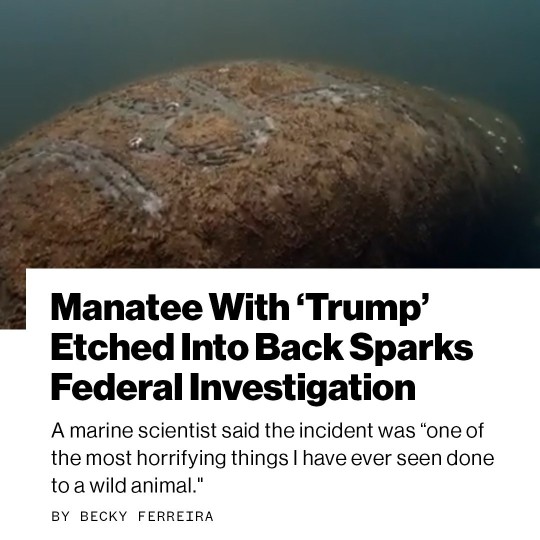
A manatee with the name “Trump” etched into its back was found in Florida’s Homosassa River over the weekend, prompting federal officials to open an investigation into this disturbing disfigurement of a threatened animal, according to the Citrus County Chronicle.
While it remains unclear when and how the manatee was mutilated—or if the ongoing investigation has secured any leads about the perpetrators—footage of the vandalized animal has sparked widespread outrage and revulsion.
The mutilation is “one of the most horrifying things I have ever seen done to a wild animal,” said Douglas Nowacek, Repass-Rodgers University Professor of Conservation Technology at Duke University, in an email.
“This act is horrific,” said Ruth Carmichael, a Senior Marine Scientist at the Dauphin Island Sea Lab and a Professor of Marine Sciences at the University of South Alabama, in an email. “I have no words to express how deeply troubling, thoughtless, and potentially cruel this is.”
The West Indian manatee is a herbivorous marine mammal found in coastal areas of the Gulf of Mexico and Caribbean Sea. The species was considered endangered by the United States Fish and Wildlife Service until 2017, when their conservation status was downlisted to “threatened.”
Though manatees are beloved by the public for their rotund bodies and curious temperaments, those same qualities also make them vulnerable to human threats such as boat strikes and, in this case, harassment.
Marine biologists said it was difficult to assess how much harm was done to the animal using only video footage.
“It’s a little hard to see the extent of damage from the video,” said Carmichael. “It is harassment regardless. If the scrape penetrates the skin, then it likely caused some pain and stress. The animals have nerves and sensory hairs in the skin. Additionally, open wounds could become infected.”
Graham Worthy, Department Chair and Pegasus Professor at the University of Central Florida, said the letters look to be shallow, and may be mostly algae scraped off the animal’s back. In that case, the “ injury would be virtually non-existent,” he said in an email.
Even if the manatee did not suffer serious injuries, harassment of these animals can result in severe penalties if the perpetrators are found.
“Violations of the Marine Mammal Protection Act may result in fines of up to $100,000 and one year's imprisonment for individuals and up to $200,000 for organizations,” Worthy noted. “It is illegal to approach and make contact with these animals let alone deface or injure them. It is illegal to feed or harass wild marine mammals including dolphins, porpoises, whales, seals, sea lions, and manatees.”
“You are not allowed to feed, swim with, or harass these marine animals,” he concluded. “They should be observed from a distance of at least 50 yards.”
+Photos
[h/t & alt]
175 notes
·
View notes
Text
Imagine Life in Millbrook — Beautiful Homes Waiting for You!
Millbrook, Alabama, is a community that embodies the heart of Southern charm. It merges small-town comfort with natural beauty and accessibility which makes it a perfect place to call home. Located just north of Montgomery, Homes For Sale In Millbrook AL combines a relaxed lifestyle with the convenience of urban amenities nearby. Whether you're looking for a peaceful environment for raising a family, a retreat for retirement, or a scenic place to start fresh, Millbrook offers an ideal blend of community, nature, and opportunity.

In this guide, we'll explore the elements that make Millbrook unique, the types of homes available, and the many benefits of settling down in this welcoming Alabama town.
A Community Rooted in Southern Hospitality
Millbrook is known for its close-knit, friendly community where Southern hospitality is alive and well. With a modest population of about 16,000, Millbrook offers an intimate, neighborly atmosphere that can be hard to find in larger cities. Here, it’s common to be greeted with a smile, and many residents are eager to lend a hand or offer a warm welcome to new neighbors. Community events, such as the annual Millbrook Mardi Gras Parade and local fairs, foster connections and provide fun ways to meet people and celebrate local traditions.
The town’s values of friendliness and inclusivity create a sense of belonging that residents cherish. Whether joining friends at a local event or spending a quiet day enjoying the scenery, you’ll feel at home in Millbrook.
Scenic Landscapes and Outdoor Recreation
One of Millbrook’s standout features is its abundance of natural beauty. With access to the Coosa and Alabama Rivers, numerous parks, and scenic trails, Millbrook is a haven for outdoor enthusiasts. The nearby Alabama Wildlife Federation’s Lanark Park offers miles of trails where residents can experience Alabama’s stunning landscapes firsthand. Families, hikers, and wildlife enthusiasts enjoy spotting the local flora and fauna and connecting with nature.
Millbrook’s parks are ideal for picnics, sports, and family outings. The Millbrook Wetland Preserve, known for its picturesque ponds and birdwatching opportunities, is a local treasure. Here, residents can unwind, enjoy a peaceful stroll, or teach their children about the environment in a tranquil, natural setting. Homes in Millbrook frequently feature spacious yards and are situated within reach of these scenic locations, making it easy to enjoy the outdoors daily.
A Variety of Homes to Match Every Lifestyle
Millbrook offers an array of home styles and prices, making it accessible for people in all life stages. Whether you’re a young professional, a family with children, or a retiree, you’ll find a home that suits your needs.
Historic Homes with Character: For those who appreciate history and craftsmanship, Millbrook’s historic homes offer a sense of nostalgia. These homes feature unique architectural elements, spacious porches, and lush lawns, creating a sense of classic Southern charm. Many historic properties are located on larger lots, offering privacy and ample space to personalize and landscape.
Modern Homes and New Constructions: Millbrook’s newer neighborhoods showcase homes with contemporary designs, open layouts, and energy-efficient features. Built to accommodate today’s lifestyles, these homes often come with luxurious kitchens, spacious family rooms, and large bedrooms. Many are in family-friendly neighborhoods with amenities like playgrounds, parks, and swimming pools.
Starter Homes and Cozy Bungalows: For first-time buyers or young families, Millbrook’s affordable homes make homeownership an attainable dream. These properties are often located close to schools, shopping centers, and recreational facilities, making them a convenient choice for those just starting out.
Luxury Estates and Spacious Properties: If you’re looking for more space and upscale features, Millbrook has an impressive selection of luxury homes. These properties often include expansive yards, high-end finishes, and amenities like pools, outdoor kitchens, and large decks – perfect for entertaining or relaxing.
Whether you’re looking for a cozy bungalow, a modern family home, or a luxurious estate, Millbrook offers a diverse range of housing options for every lifestyle.
Family-Friendly Living and Quality Education
Millbrook is a fantastic place to raise a family. The Elmore County Public School District serves Millbrook and is known for its commitment to educational excellence. With a focus on academics, extracurriculars, and community involvement, the schools in Homes For Sale Lake Martin AL offer a supportive learning environment for children from elementary through high school.

For those seeking alternatives, there are private schools and other educational options nearby, catering to various needs and preferences. Millbrook also has a range of youth programs, sports leagues, and family-friendly community events. With parks, playgrounds, and nature preserves, children have ample opportunities to be active and enjoy the outdoors.
Additionally, Millbrook has a reputation for being a safe and nurturing environment. Families enjoy peace of mind knowing they live in a community that values safety, making it an ideal choice for those seeking a family-oriented atmosphere.
A Strategic Location Near Montgomery
Millbrook’s proximity to Montgomery, just a 15-minute drive away, makes it a convenient choice for commuters. This location allows residents to access the employment, dining, shopping, and entertainment options of the state capital while enjoying a quieter, more relaxed lifestyle at home.
For weekend getaways or family trips, Millbrook’s location is also ideal. The town provides easy access to major highways, making destinations like Birmingham, the scenic Gulf Coast, and Atlanta reachable for day trips or short vacations. Whether you’re traveling for work, leisure, or exploration, Millbrook’s central location offers flexibility and convenience.
Charming Local Amenities and Cultural Attractions
While Millbrook retains its small-town charm, it doesn’t lack amenities or cultural offerings. The town itself has a variety of local shops, boutiques, and restaurants. Residents can enjoy Southern cuisine, fresh produce at farmers’ markets, and quaint cafes for coffee or brunch. For additional options, Montgomery is nearby with its theaters, art galleries, museums, and civil rights landmarks.
For arts and culture, residents have easy access to the renowned Alabama Shakespeare Festival and the many museums and historical sites in Montgomery. Living in Millbrook allows you to experience the best of both worlds: a peaceful, small-town atmosphere paired with access to cultural experiences just a short drive away.
An Emerging Real Estate Market with Investment Potential
As more people discover the appeal of suburban living close to urban areas, Millbrook’s real estate market has seen increased interest. With homes here being relatively affordable compared to those in larger cities, Millbrook presents a great opportunity for buyers who are looking for value and long-term investment.
The area’s steady growth in population and continued investment in infrastructure have contributed to a healthy real estate market. For homebuyers and investors, this means an opportunity to purchase property in an area that is likely to continue appreciating. Millbrook combines the stability of a well-established town with the growth potential that attracts new residents each year.
Relaxed Living and a Simpler Pace of Life
Residents of Millbrook appreciate the relaxed pace and lifestyle. Without the hustle and bustle of a larger city, Millbrook offers a tranquil environment where life is a little slower and simpler. Enjoy quiet mornings on the porch, walks through scenic parks, and afternoons spent visiting with neighbors.
Millbrook’s slower pace allows people to focus on what matters most: family, health, and community. This simplicity in lifestyle makes Millbrook especially appealing to retirees or anyone looking to escape the stress of urban life.
Why Millbrook, AL, Could Be the Perfect Place for You
Millbrook is more than just a place to live – it’s a community where you can grow, relax, and thrive. Its rich variety of homes, beautiful landscapes, quality schools, and sense of community make it a top choice for people at all stages of life. Here, you’ll find more than just a house; you’ll find a lifestyle built around Southern charm, family, and connection to nature. Imagine waking up each day in a town where you can breathe fresh air, take leisurely walks, and truly connect with the people around you. Millbrook offers this and more, all while being conveniently close to the cultural and economic resources of Montgomery.

Conclusion:
Millbrook is more than a location—it’s a lifestyle choice. From the scenic natural beauty to the supportive community, the town offers a sense of belonging and fulfillment that makes it feel like home. In Aronov Realty, you’ll find more than just a house; you’ll find a place where life can be lived at a more enjoyable pace, surrounded by beauty and comfort. Whether you’re ready to settle into a family-friendly neighborhood, start fresh in a new build, or enjoy the luxury of a spacious estate, Millbrook has a variety of homes waiting for you to make your own. Imagine waking up each day to the warm Alabama sun, surrounded by nature, friendly neighbors, and the charm of Southern living.
1 note
·
View note
Link

Excerpt from this press release from the Center for Biological Diversity:
The U.S. Fish and Wildlife Service must update its plan for saving critically endangered red wolves in the next two and a half years, according to a legal agreement reached as a result of a lawsuit brought by the Center for Biological Diversity. Red wolves, which are native to the southeastern United States, have dwindled to just nine known individuals in the wild, living in the eastern part of North Carolina.
“With only nine wolves known to remain in the wild, the red wolf desperately needed this good news,” said Collette Adkins, carnivore conservation director at the Center. “The science shows that the red wolf can be saved, and I’m hopeful that a new recovery plan will put the species back on the road to recovery.”
The agreement, approved Oct. 2 by a North Carolina federal court, requires the Fish and Wildlife Service to complete a final revised recovery plan for red wolves by Feb. 28, 2023.
This victory is the result of the Center’s 2019 lawsuit, which challenged the Fish and Wildlife Service’s failure to revise the outdated recovery plan from 1990. The Center filed its suit after the Service failed to follow through on its commitment to update the decades-old recovery plan by the end of 2018.
The Endangered Species Act requires that the agency prepare plans that serve as roadmaps to species recovery, identifying measures needed to ensure conservation and survival, such as reintroductions.
Last year the Center released a report identifying five potential reintroduction sites that together could support nearly 500 breeding pairs of red wolves. All the sites are on public lands in Alabama, Arkansas, Florida, North Carolina, Virginia and West Virginia.
4 notes
·
View notes
Text
There’s apparently a challenge going on at Twitter where you gotta list off what you know about each state of the US, so I’m stealing the prompt from @fixaidea since it might be interesting!
I’ll be particularly interested to see how much of my knowledge of the states is either from sports (which in the past few years I guess I have become a follower of, sort of, insofar as I only read articles about them) or politics.
Edit from the future: Holy crap this got long. I’m gonna stop after doing the first... half-ish and do another post with the rest later, lol.
Alabama: The stereotypical “red state:” highly Christian, highly conservative. No idea about demographics - I feel like I haven’t heard of a sizable Black population, for some reason? Seems odd for a southern state. Massively into college football and the Alabama-Auburn rivalry.
Alaska: Lots of unpopulated or sparsely populated land, probably largely federal land. Pretty in the supper, supposedly. Lots of wildlife; bears and fish seem like the stereotype. Hard not to associate with Sarah Palin. Used to have a major international airport when the Soviet Union didn’t allow flight over its territory. Population mostly in cities in the southwest coast(?)
Arizona: Hot, dry. Low population density. Significant amount of Native American reservations, I... think? (Not sure that is actually the most appropriate and respectful term?) Only things I know of there are the Grand Canyon, one university, and the Cardinals NFL team.
Arkansas: Uhh... it has a low population, is not on the coast, is probably west of the Mississippi, and probably tends to vote Republican? I don’t actually know where Arkansas is. Actually, maybe that’s Kansas, and Arkansas is near Tennessee and, like, North Carolina. Actually, that sounds right. Forget what I said earlier. That being said, I (clearly) have no idea whatsoever.
California: Huge, so hard to summarize; climate especially varies a lot between north and south. Huge, diverse population. Significant Asian-American population, including Governor. Reliable Democrat vote. LA is basically the biggest population center in the US; has Hollywood and lots of media production. Expensive place to live. Has 2 teams of most sports leagues just like NYC, and still has high population-per-team. San Diego is further South. San Francisco area has tons of tech companies, large bay, golden gate bridge, significant homelessness issue. State is also big on surfing, wine production.
Colorado: Fairly low population density overall, as you might expect from a western non-coastal state, but Denver is actually pretty dense. Has a bunch of the sports teams that basically represent that area of the US. Fairly liberal on the whole(?); was known for early legalization of marijuana. Lots of mountains. (No idea if it’s just Denver that’s a mile high or most of the state’s area.)
Connecticut: Tiny. Usually thought of in the same breath as its neighbors like Massachusetts and New York. I can’t actually think of anything specific to Connecticut that’s not about New England. Has a highway.
Delaware: Tiny. Joe Biden lives there. Uhh...
District of Columbia: Has more population than... I forget how many, but enough states that it obviously should be one. Ridiculously, absurdly blue “state.” (Partially from not including ~any rural area, I’m sure, but still.) The whole federal government is there. Square-ish.
Florida: Big, warm, wet. Nice weather for retired people and those trying to escape the cold. Lots of swamps and wildlife (alligators, stereotypically). Palm trees. We launch rockets there so they can go East over the ocean and are near the equator. Has Disney... uh, world? land? Miami is known as a destination city for partying. Tampa Bay is... I don’t know. Jacksonville has a military port. I would have assumed Miami and Orlando were the only large cities if not for sports. Cuba is close to Miami, so there’s a significant Cuban population. (Hispanic, too, possibly?) Swing state.
Georgia: Southern state with all that entails. Significant Black population. High Christian population, I assume. Elected a Black governor, which is a huge deal. Atlanta is a huge Black cultural center(?).
Hawaii: Y’all know what Hawaii is, so gonna skip the general stuff. Big Polynesian(?) population. Big military population and influence. Big Asian population and a common vacation destination from Japan, China, etc. Expensive as hell, obviously. Very liberal. Big on fighting climate change. Surprisingly diverse climate, considering how small it is.
Idaho: Lots of farming, not a lot of people. The stereotype is potatoes, but I don’t actually know how accurate that is. Midwestern.
Illinois: Has Chicago, a huge city, and a bunch of non-Chicago area, serving as the common example of how states are designed to have diverse population density. Chicago is on the (one of the great lakes), and sometimes it’s very windy and cold. Uh... I don’t actually know a lot about Illinois. Usually votes blue? People seem to like their sports teams?
Indiana: Midwestern. Red state. Known for the Indy 500, Mike Pence being from there, John Green living there, and... not sure what else, really. Has sports teams in Indianapolis, so presumably it’s fairly populous.
Iowa: Midwestern...ish, I think? Known for the first caucuses, and thus for being a small swing state comprised of basically just white people. Has... farms, I think?
Kansas: See entry for Arkansas.
Kentucky: Southern state known for bluegrass music, barbecue(?), uh... and probably some other stuff? In what I’m calling the Tennessee area. Super red state.
Louisiana: Southern coastal state. Has the Mississippi river mouth, I think. Has New Orleans, which is known for cuisine, French influence, and getting hit by Hurricane Katrina. (And football, both college and professional.) Also, mardi gras. Super red state.
Maine: Lots of forests. Not lots of not-white-people. So far northeast it’s basically Canada. Known for Lobster fishing, having an independent-party senator, ranked-choice voting, and... well, being full of forests.
Maryland: Hm. Washingon D.C. was originally Maryland, so this must be near Virginia. Oh, right, Baltimore is in Maryland. Which is known for crab fishing. And uh... I’m gonna guess red state? I feel like I should have more here.
Massachusetts: Where I grew up, which surprisingly makes it hard to describe since you just think of your birthplace as the default. Insert New England things here. Clam chowder, being pretty in the fall, I dunno. Has Boston, the biggest(?) city in New England. Won basically ever sport one year.
Michigan: Is between all the great lakes. Was once a manufacturing powerhouse, and to a lesser extent presumably still is. Has Detroit, known as Motor City, where all (or a lot of) the US auto manufacturers are based, and Flint, known for poisoning a ton of its poor population with lead piping and doing fuck all about it.
Minnesota: Amy Klobuchar’s state, so midwestern and presumably moderate-democratic. Has a professional football rivalry with Wisconsin that almost seems to indicate a general rivalry of sorts. No idea what it’s known for economically.
2 notes
·
View notes
Text
Economy
Nowadays, the economy of a given place is an essential factor in living a comfortable life. Knowing the fast-paced changes in the society, knowing the economic development of your place is important. Basically, the economy of Auburn is focused on Auburn University and providing university-affiliated services. Auburn University employs 4,300 people that are roughly one-quarter of the total workforce of the city. Aside from that, 2,400 Auburnites are employed by the federal and state government in positions that are generally connected with the university. Lastly, the industrial base in the said place is built around mid-sized, high tech manufacturing and research firms.
3 Auburn players test positive for coronavirus
Three Auburn players tested positive for COVID-19 and will be quarantined before they are cleared for offseason workouts. Auburn players reported back to campus on Thursday evening and were all tested for the coronavirus on Friday ahead of the commencement of voluntary offseason workouts, which are set to begin Monday. The spokesman did not identify which players tested positive, but all three will be self-isolated in quarantine in a dorm separate from the one housing the rest of the team. The players will likely remain in quarantine for approximately two weeks. Read more here.
These days, the pandemic has changed the daily routine of so many people. Aside from health protocols to follow, it is also necessary to find ways to have enough food and supplies at home. However, it is truly frightening to be found positive of coronavirus. In the news lately, there were three Auburn players who tested positive for the deadly virus. With that, they will be quarantined before they are cleared for offseason workouts. Lastly, the three players who tested positive were all asymptomatic as mentioned by a team spokesman who confirmed to AL.com.
Kreher Preserve & Nature Center in Auburn, AL
Are you planning to visit Kreher Preserve & Nature Center in Auburn, AL for the first time? All you have to do is wait for the time that traveling is already safe. Then, make sure to include this area in your itinerary. The beauty of the place is totally remarkable. Interestingly, the area offers outdoor recreation, nature education, and many ways to just relax and enjoy the wilderness. Aside from that, this first-class discovery and nature center is an outreach program of the School of Forestry and Wildlife Sciences and is open to the public every day from sunrise to sunset.
Have you checked the website of Auburn Timberlands lately? We know that a reliable source of information is necessary if you want to find the best company that can buy your timber in Alabama area. Although you can resort to online research in general, nothing beats checking the company website to have first-hand information about them. There is nothing to worry since their site is use-friendly. It has also relevant information regarding your need to sell your forest products. In addition, you can easily see their contact information by visiting their website. Lastly, you can also find references in case you’re fond of reading testimonials shared by their clients.
Link to Map
Kreher Preserve & Nature Center N College St, Auburn, AL 36830, United States
Head southeast on AL-147 S/N College St toward Tivoli Village Dr 1.6 mi
Turn right onto AL-147 S/AL-267 S/Shug Jordan Pkwy 1.0 mi
Continue straight onto Shug Jordan Pkwy 4.0 mi
Turn right onto AL-147 S/AL-15 S/S College St Pass by Wendy's (on the right in 0.5 mi) 1.1 mi
Turn right onto Veterans Blvd Destination will be on the right 154 ft
Auburn Timberlands 106 Veterans Blvd Auburn, AL 36832, USA
1 note
·
View note